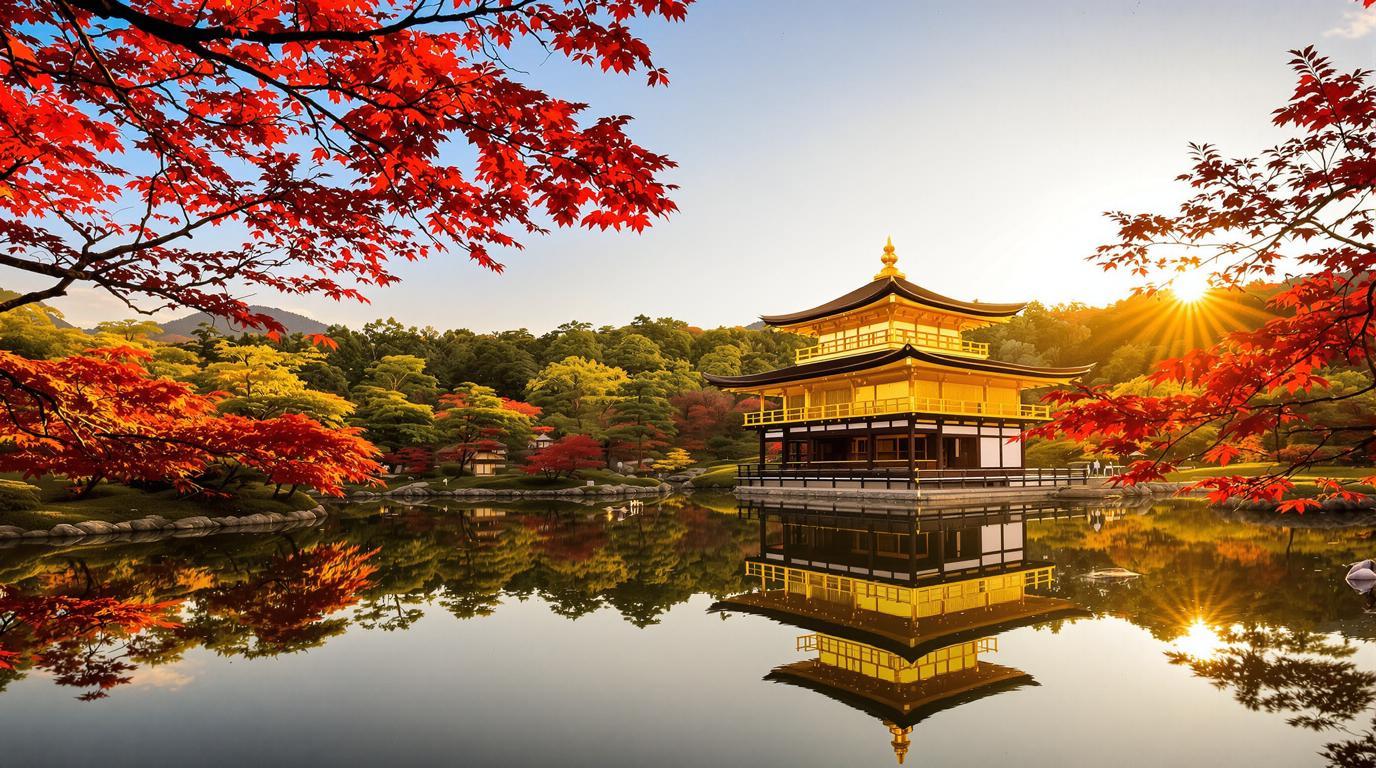Kyoto’s golden temples and secret alleyways have drawn travelers for centuries, but this ancient Japanese capital offers far more than just postcard-perfect scenery. Once home to emperors for over 1,000 years, Kyoto miraculously escaped bombing during WWII, preserving its cultural treasures in a way few cities can claim.
The bamboo forest that whispers ancient secrets
When early morning light filters through Arashiyama’s towering bamboo stalks, the grove transforms into a mystical realm. The gentle creaking of bamboo swaying in the breeze creates what Japan has officially designated as one of the country’s most important soundscapes. Arrive before 7am to experience this enchanted forest without the crowds that gather by mid-morning.
Like Nara with its ancient bowing deer, Kyoto maintains a delicate harmony between nature and centuries-old tradition. This careful balance reveals itself in every corner of the city.
Gold that captures the imagination for eternity
Kinkaku-ji, the Golden Pavilion, stops first-time visitors in their tracks. Its top two floors completely covered in gold leaf create a perfect reflection in the surrounding pond. Destroyed by a mentally troubled monk in 1950, the current structure is a meticulous 1955 reconstruction that shimmers with the weight of history.
“The Golden Pavilion doesn’t just reflect in water – it reflects Japan’s enduring spirit to preserve beauty even after destruction,” explains Kenji Ishihara, a local historian who’s documented Kyoto’s treasures for three decades.
A thousand vermilion gates climbing to sacred heights
At Fushimi Inari Shrine, 10,000 vibrant orange-red torii gates create tunnels that snake up the mountainside. The complete hiking loop takes about three hours, but most visitors only experience the densely packed gates at the beginning. Push beyond the first section to discover moss-covered fox statues and breathtaking Kyoto views free from crowds.
The landscape rivals even Tanzania’s hidden emerald waterfalls for dramatic natural beauty merged with cultural significance.
The ancient geisha district where time stands still
Gion’s narrow cobbled lanes preserve Japan’s most authentic geisha traditions. Early evening brings glimpses of geiko (Kyoto’s geisha) and maiko (apprentices) hurrying between appointments, their wooden geta sandals clicking rhythmically against stone pathways. Their elaborate kimonos and white makeup represent traditions dating back 300 years.
Gion feels worlds away from modern life – much like Bora Bora’s untouched twin in the South Pacific – preserving customs that might otherwise fade into history.
Markets that awaken all five senses
Nishiki Market’s narrow covered arcade stretches five blocks through downtown Kyoto, offering a sensory explosion of traditional foods. Stalls display everything from fresh seafood to pickled vegetables in a dazzling array of colors and aromas. Sample tamago dashimaki (sweet omelet) or takotamago (baby octopus stuffed with quail egg) for authentic local flavors.
“To understand Kyoto’s soul, you must taste its traditions at Nishiki,” says Chef Yoshihiro Murata of three-Michelin-starred Kikunoi restaurant. “The market has sustained our culinary heritage for over 400 years.”
Beyond the famous: Kyoto’s hidden temples
While tourists crowd famous sites, locals treasure quieter temples like Otagi Nenbutsu-ji with its 1,200 whimsical stone figures, each with a unique facial expression. This tranquil sanctuary offers the kind of otherworldly experience travelers might find at America’s most alien-like national parks.
For purification rituals that rival Thailand’s ancient water festivals, visit Kiyomizu-dera at sunset when the temple’s wooden stage glows in golden light. The name means “pure water temple,” referring to the sacred falls where visitors drink from three streams said to bring wisdom, health and longevity.
Kyoto doesn’t just preserve Japan’s past – it keeps ancient wisdom alive in everyday life. Each temple bell, garden stone, and tea ceremony contains centuries of refinement that speaks to travelers seeking something deeper than mere sightseeing. This ancient capital doesn’t need to shout for attention; its quiet elegance continues to captivate all who wander its storied streets.
